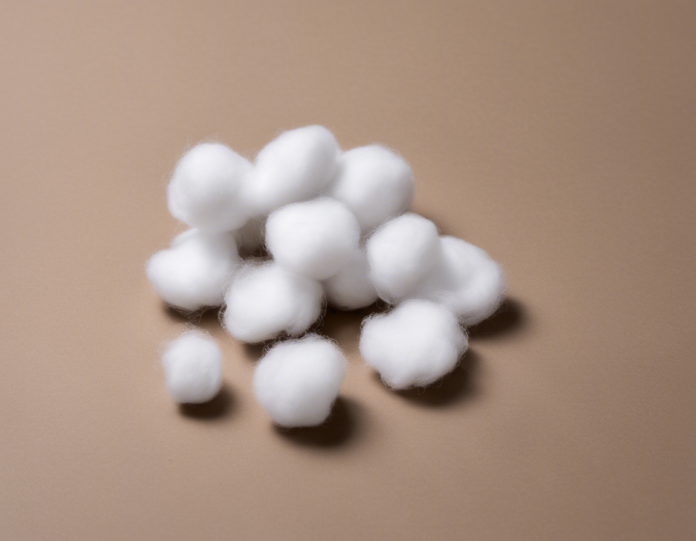Introduction
Cotton is a versatile and commonly used natural fiber in the textile industry due to its softness, breathability, and durability. However, many people have experienced the frustrating phenomenon of cotton clothing shrinking after being washed. This shrinkage occurs because of the unique properties of cotton fibers and how they interact with water and heat. In this article, we will delve into the science behind why cotton shrinks in water and how you can prevent or minimize this shrinkage.
Understanding Cotton Fiber Structure
To comprehend why cotton shrinks in water, it is essential to first understand the structure of cotton fibers. Cotton is composed of cellulose, a complex carbohydrate that forms the primary component of the fiber. These fibers are twisted together to create yarns, which are then woven or knitted to make textiles like clothing, home linens, and more.
Pre-treatment of Cotton Fabrics
During the manufacturing process of cotton textiles, the fibers undergo several treatments like spinning, weaving, and finishing to achieve the desired characteristics. One crucial step in this process is pre-shrinking the fabric before it is cut and sewn into garments. This pre-treatment involves subjecting the fabric to heat and moisture to minimize potential shrinkage when the end product is washed by the consumer.
Water Absorption by Cotton Fibers
Cotton fibers have a unique ability to absorb water, which sets off a series of chemical and physical changes in the fiber structure. When cotton fabric is submerged in water, the individual fibers swell as they absorb moisture. This causes the fibers to increase in diameter and length.
Effects of Heat
Once the cotton fibers have absorbed water, the application of heat, such as during washing and drying, becomes a critical factor in the shrinking process. When the wet cotton fabric is exposed to heat, either through hot water in the washing machine or the high temperatures of a dryer, the fibers lose their natural twist and alignment. The heat causes the fibers to contract and interlock more closely together, leading to the fabric shrinking overall.
Mechanical Agitation
Apart from water and heat, the mechanical agitation experienced during the washing and drying of cotton garments also contributes to shrinkage. The agitation causes the fibers to rub against each other, further enhancing the interlocking and tightening of the fibers. This mechanical action, combined with the effects of water and heat, accelerates the shrinkage process.
Preventing Cotton Shrinkage
While it is challenging to entirely eliminate the possibility of cotton shrinking in water, there are several measures you can take to minimize shrinkage and care for your cotton garments effectively:
Use Cold Water: Washing your cotton clothes in cold water can help reduce the amount of shrinkage compared to hot water. Cold water is less likely to cause the fibers to swell excessively, limiting the potential for shrinkage.
Gentle Cycle and Mild Detergent: Opt for the gentle cycle on your washing machine and use a mild detergent specially formulated for delicate fabrics. This gentle approach can help reduce the stress on the fibers and minimize shrinkage.
Air Dry or Low Heat: Instead of machine drying your cotton garments on high heat, consider air-drying them or using the lowest possible heat setting on your dryer. High heat can significantly contribute to shrinkage, so minimizing heat exposure is key.
Avoid Overcrowding: When washing your cotton clothes, avoid overcrowding the machine. Overcrowding can lead to increased friction between the garments, causing more significant agitation and potentially more shrinkage.
Ironing and Stretching: If your cotton garment has already shrunk, you can try to stretch it back to its original size while it is damp. Additionally, using a steam iron on a low setting can help relax the fibers and restore some of the lost length.
Frequently Asked Questions (FAQs):
Q1: Can all types of cotton shrink in water?
A1: Yes, most types of cotton fabrics have the potential to shrink when exposed to water and heat. However, some varieties like pre-shrunk or "preshrunk" cotton may undergo minimal shrinkage due to pre-treatment during manufacturing.
Q2: Will cotton always shrink the first time it is washed?
A2: While cotton garments are more prone to shrinking during the first wash due to the initial release of tension in the fibers, subsequent washes can also cause further shrinkage if not handled properly.
Q3: Is it possible to reverse cotton shrinkage once it has occurred?
A3: It is challenging to reverse cotton shrinkage completely. However, you can try stretching the garment while it is damp or using a steam iron on a low setting to relax the fibers and regain some of the lost length.
Q4: Does the quality of cotton affect its tendency to shrink?
A4: The quality of cotton, including factors like fiber length, weave, and finishing, can influence its propensity to shrink. Higher quality cotton with longer fibers may exhibit less shrinkage compared to lower quality varieties.
Q5: Should I avoid buying cotton clothing to prevent shrinkage?
A5: Cotton remains a popular choice for clothing due to its comfort and breathability. While shrinkage can be a concern, following proper care instructions, such as washing in cold water and air drying, can help maintain the integrity of your cotton garments.
Conclusion
In summary, cotton shrinks in water primarily due to the water absorption and heat-induced changes in fiber structure. Understanding the properties of cotton fibers, the effects of water, heat, and mechanical agitation, as well as adopting proper care practices can help minimize shrinkage and prolong the life of your cotton garments. By following the tips mentioned in this article, you can enjoy the comfort and versatility of cotton clothing without worrying about excessive shrinkage.

